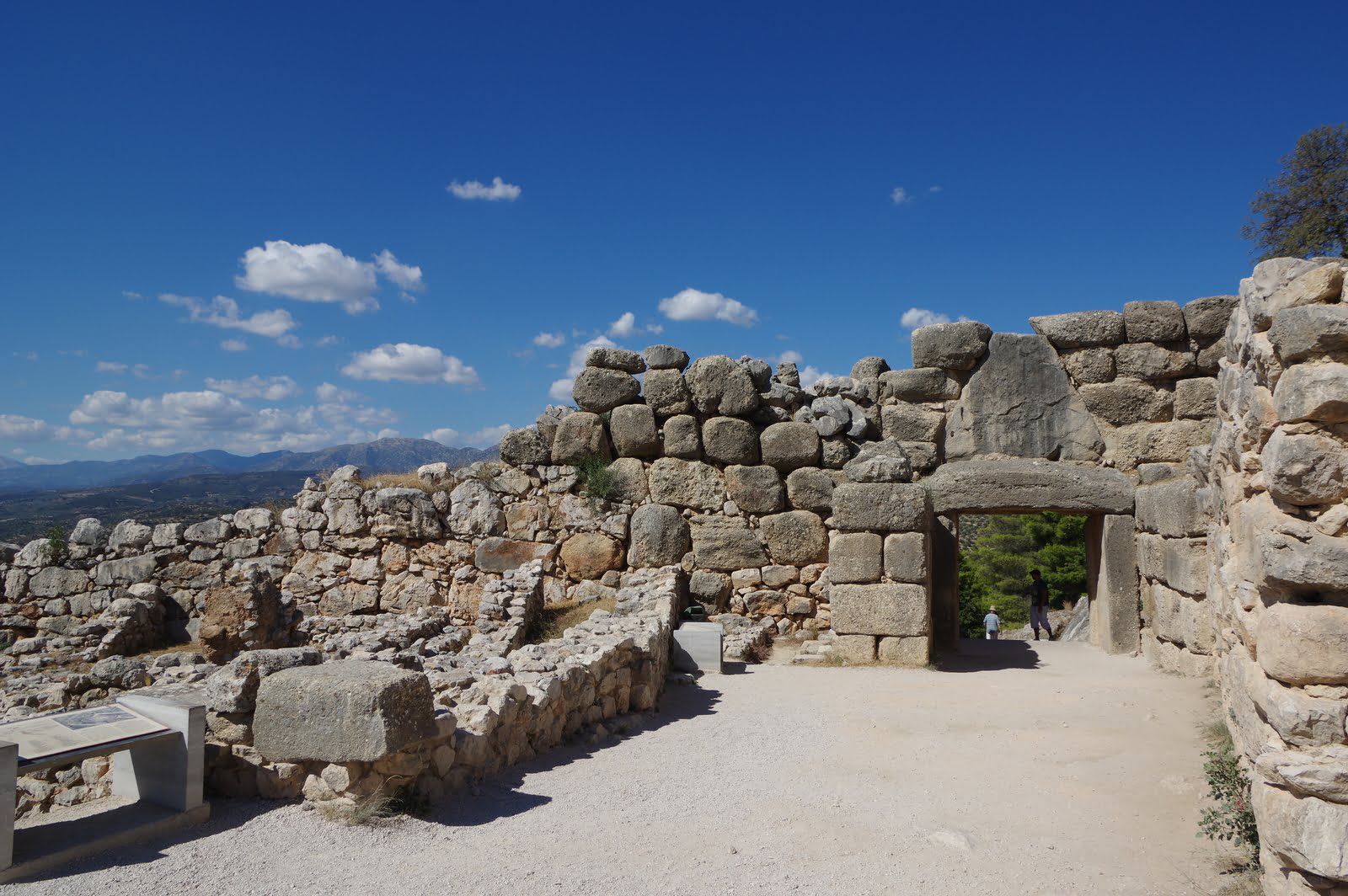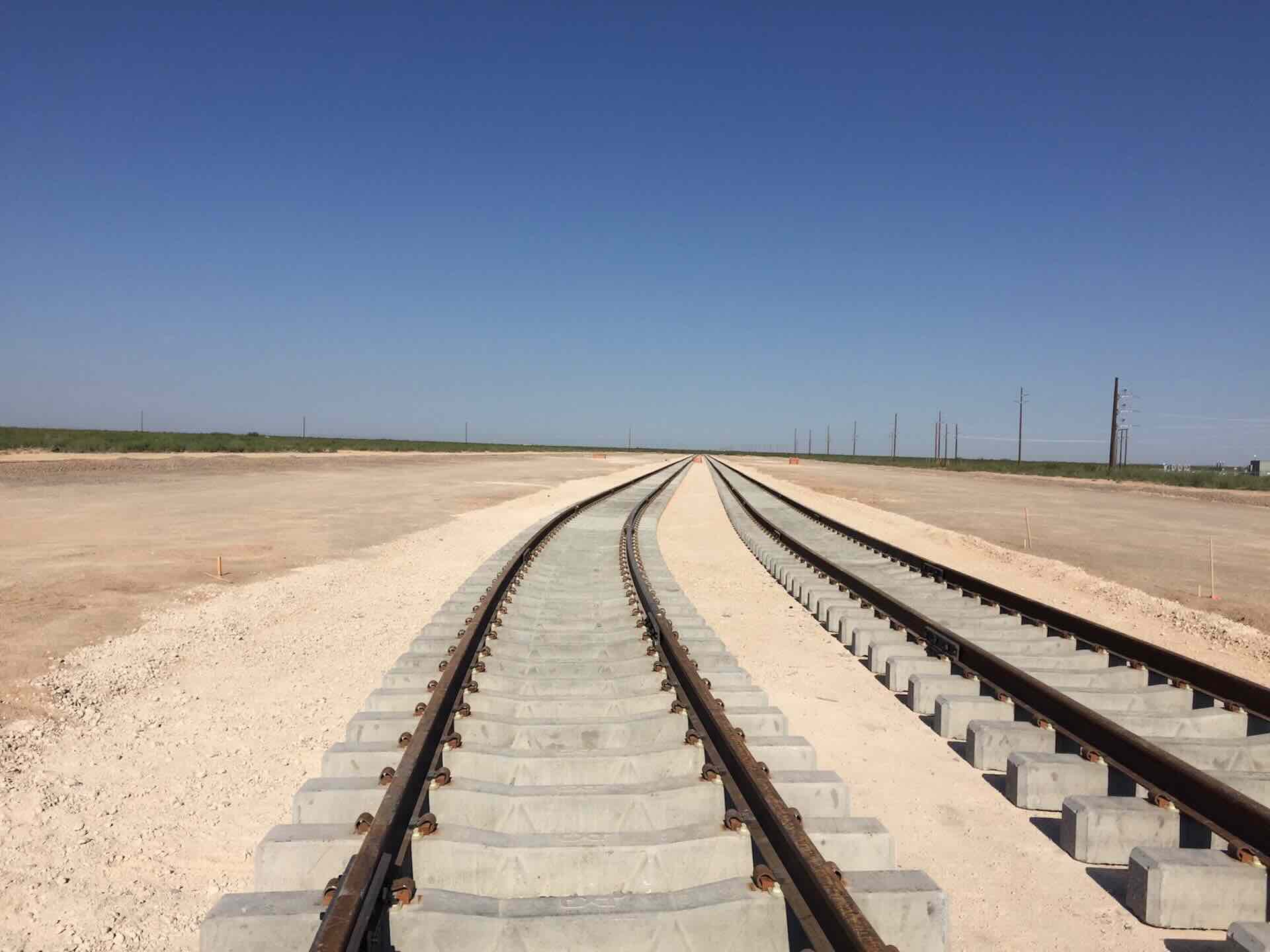Home>diy>Building & Construction>Which Is A Construction Made Of Huge Stones?


Building & Construction
Which Is A Construction Made Of Huge Stones?
Modified: December 7, 2023
Discover the awe-inspiring world of building construction, where massive stones come together to create magnificent structures that stand the test of time. Explore the artistry and engineering behind these epic creations.
(Many of the links in this article redirect to a specific reviewed product. Your purchase of these products through affiliate links helps to generate commission for Storables.com, at no extra cost. Learn more)
Introduction
The use of stones in construction has been a fundamental element of human civilization for centuries. Throughout history, architects and builders have utilized stones to create remarkable structures that stand as testaments to human ingenuity and engineering prowess. These structures not only showcase the architectural skills of the past, but also offer insights into the cultures and societies that thrived during their construction.
In this article, we will explore some of the most iconic constructions made of huge stones from different parts of the world. From mystical ancient structures to architectural marvels, these stone constructions continue to awe and inspire people today.
Key Takeaways:
- Ancient stone constructions, from Stonehenge to the Great Pyramids, showcase the remarkable engineering and cultural significance of past civilizations, captivating and inspiring visitors with their enduring legacy.
- Visiting these iconic stone constructions allows us to travel back in time and marvel at the achievements of ancient civilizations, providing a glimpse into their technological advancements, societal frameworks, and spiritual beliefs.
Stonehenge
Stonehenge, located in Wiltshire, England, is perhaps one of the most famous prehistoric monuments in the world. Dating back over 4,000 years, this ancient construction is composed of massive stones known as megaliths. The structure consists of standing stones arranged in a circular pattern, with some weighing up to 25 tons. The purpose and methods of construction of Stonehenge remain a subject of debate and speculation.
One of the intriguing aspects of Stonehenge is the transportation of these colossal stones from different quarries, some over 150 miles away. It is believed that ancient people used a combination of sledges, wooden rollers, and possibly even water transport to move these imposing stones into position. The precise alignment of the stones has also led to speculation about its connection to astronomical events.
Stonehenge serves as a symbol of ancient ingenuity and the ability of our ancestors to create awe-inspiring structures using simple tools and techniques. Its enduring presence continues to captivate visitors and researchers, as they try to unravel the mysteries shrouded within its ancient stones.
The Great Pyramids of Egypt
The Great Pyramids of Egypt are undoubtedly one of the world’s most iconic architectural wonders. Located on the outskirts of Cairo, these massive structures were built as tombs for the ancient Egyptian pharaohs. The most famous among them are the Pyramids of Giza, which include the Great Pyramid of Khufu, the Pyramid of Khafre, and the Pyramid of Menkaure.
Built over 4,500 years ago, these pyramids were constructed using enormous blocks of limestone and granite, some weighing up to 80 tons. Each pyramid was meticulously designed with mathematical precision, aligning with the cardinal directions and reflecting the religious beliefs of ancient Egyptians.
The construction process of these pyramids remains an enigma. It is believed that teams of skilled laborers and artisans worked tirelessly for decades, using ramps, sledges, and pulleys to drag and lift the massive stones into position. The interior chambers of the pyramids feature intricate passageways and chambers, showcasing the advanced architectural knowledge of ancient Egyptians.
The Great Pyramids of Egypt stand as a testament to the ingenuity, power, and wealth of the ancient Egyptian civilization. They continue to attract millions of visitors each year, who marvel at the grandeur and remarkable preservation of these majestic structures.
The Moai of Easter Island
Located in the remote Pacific Ocean, Easter Island is home to the enigmatic statues known as the Moai. These colossal stone figures, carved by the Rapa Nui people around 800 years ago, are a testament to the extraordinary craftsmanship and cultural significance of this Polynesian civilization.
The Moai statues range in size, with the tallest standing over 30 feet high and weighing up to 75 tons. These monolithic figures were crafted from compressed volcanic ash known as tuff, found on the island itself. The intricate carving process involved chisels made of hard basalt, which were painstakingly used to shape the statues.
One of the remarkable aspects of the Moai is their transportation and installation across the island. Scholars believe that the Rapa Nui people used a combination of ropes, wooden sledges, and manpower to move these massive stone statues from the quarry to the ceremonial platforms known as “ahu.” The precise methods employed by the ancient islanders remain a subject of ongoing research and archaeological study.
The Moai statues not only served as representations of ancestors and tribal leaders but were also believed to embody spiritual and protective qualities. These iconic stone figures have become a symbol of Easter Island and have captivated the imaginations of travelers and researchers alike, drawing visitors from around the world to witness their mysterious allure.
Machu Picchu
Nestled high in the Andes Mountains of Peru, Machu Picchu is an archaeological wonder and a UNESCO World Heritage site. This ancient Inca citadel, built around the 15th century, showcases the remarkable stonework and urban planning skills of the Inca civilization.
Machu Picchu is constructed using massive blocks of stone carefully shaped and fitted together without the use of mortar. The precision and intricacy of the stonework, known as ashlar masonry, are remarkable considering the tools available to the Inca people at that time. The stones fit so perfectly that not even a blade of grass can squeeze between them.
The intricate terraces, buildings, and stairways of Machu Picchu are not only functional but also blend harmoniously with the surrounding natural landscape. The strategic placement of the structures takes advantage of the mountain’s geological features, showcasing a deep understanding of engineering principles.
The purpose of Machu Picchu remains a subject of speculation, with theories ranging from a royal estate to a spiritual retreat. However, its remote location and the lack of written records have left many aspects of its history open to interpretation.
Visiting Machu Picchu is a breathtaking experience, as one can witness the awe-inspiring architecture and immerse themselves in the ancient Inca culture that still lingers in the air. This iconic stone construction serves as a testament to the ingenuity and harmonious coexistence between humanity and nature.
Look for structures like Stonehenge or the Great Pyramids, which are made of massive stones and are known for their impressive construction.
Read more: Which Power Tools Are Made In The Usa
The Great Wall of China
Stretching over 13,000 miles across northern China, the Great Wall is a remarkable feat of engineering and one of the most famous historical landmarks in the world. While it is not made entirely of stones, the wall incorporates large stones as its primary building material.
The construction of the Great Wall of China began over 2,000 years ago during the Qin Dynasty and continued throughout subsequent dynasties. The wall was built using a combination of stones, bricks, earth, and other materials, depending on the availability and terrain of the region.
The most iconic sections of the Great Wall feature large stone slabs arranged in a layered and fortified structure. These stones were meticulously cut and shaped to fit together seamlessly, creating a formidable defensive barrier against invasions from the north.
The transportation and installation of the massive stones proved to be a monumental task. It is believed that laborers used ramps, sledges, and pulleys to transport and position the stones, with each section of the wall being built by hand. The wall incorporates watchtowers, fortresses, and beacon towers, showcasing the strategic brilliance of its engineering design.
Today, the Great Wall of China stands as a symbol of China’s rich history and cultural heritage. Its towering presence attracts millions of visitors each year, who marvel at its grandeur and the breathtaking views it offers.
The Colosseum
Located in the heart of Rome, Italy, the Colosseum is an iconic symbol of Roman engineering and grandeur. Built over 2,000 years ago, this monumental amphitheater stands as a testament to the advanced architectural techniques employed by the ancient Romans.
The Colosseum is primarily constructed using travertine limestone, a durable and abundant stone found in the region. The massive outer walls, arches, and columns were meticulously crafted and fitted together to create the elliptical structure that spans over six acres. The precision and craftsmanship of the stonework are evident in the intricate details and the balance achieved within the structure.
The purpose of the Colosseum was to host various events, including gladiatorial contests, animal hunts, and dramatic performances. Its ingenious design allowed for efficient crowd management, with the amphitheater being divided into different seating sections based on social status.
The Colosseum also featured an elaborate system of vaulted tunnels and chambers beneath the arena floor, known as the hypogeum. These underground passages served as storage rooms, animal holding areas, and provided access for performers and animals to enter the arena.
Today, the Colosseum stands as an iconic symbol of ancient Roman civilization and attracts millions of visitors each year. Its architectural beauty and historical significance make it one of the most renowned stone constructions in the world.
The Karnak Temple Complex
Situated on the east bank of the Nile River in Luxor, Egypt, the Karnak Temple Complex is a vast and awe-inspiring collection of temples, obelisks, and sanctuaries. Constructed over a period of 2,000 years, from the Middle Kingdom to the Ptolemaic period, this ancient religious complex showcases the architectural prowess of the ancient Egyptians.
The Karnak Temple Complex is primarily made of sandstone and limestone. The towering columns, some reaching up to 80 feet in height, are meticulously carved and adorned with hieroglyphic inscriptions and intricate relief carvings of gods, pharaohs, and mythical creatures. The grandeur of the complex is amplified by the massive pylons and statues that greet visitors at the entrance.
The construction techniques employed at Karnak were truly remarkable, considering the lack of modern machinery and tools. The precise placement and alignment of the massive stones, along with the intricate details, reflect the advanced engineering skills of the ancient Egyptians.
The Karnak Temple Complex was dedicated to the god Amun-Ra, the chief deity of ancient Egypt, along with his consort Mut and their son Khonsu. The complex served as a religious hub and was the site of important rituals, ceremonies, and offerings.
Today, the Karnak Temple Complex stands as a testament to the ancient Egyptian civilization’s devotion to their gods and their mastery of architectural design and construction. Its colossal structures and rich historical significance make it a must-visit destination for anyone interested in exploring the wonders of ancient Egypt.
The Taj Mahal
Located in Agra, India, the Taj Mahal is an architectural masterpiece and a jewel of Islamic art. Commissioned by the Mughal emperor Shah Jahan in the 17th century as a mausoleum for his beloved wife, Mumtaz Mahal, it stands as an enduring symbol of love and beauty.
The Taj Mahal is primarily constructed using white marble, which gives it its dazzling appearance and a pristine glow. The massive central dome and the graceful minarets epitomize the elegance and symmetry of Mughal architecture. The intricate carvings, calligraphy, and inlaid precious stones further enhance its ornate beauty.
The construction of the Taj Mahal was a monumental undertaking, involving thousands of artisans, craftsmen, and laborers. The marble stones were obtained from quarries hundreds of miles away and transported to the construction site using a network of rivers and land routes.
The precise placement and interlocking of the marble stones reflect the meticulous craftsmanship and engineering skills of the artisans. The complex features a detailed layout with gardens, reflecting pools, and fountains, all contributing to the overall symmetry and splendor of the structure.
Today, the Taj Mahal stands as a UNESCO World Heritage site and attracts millions of visitors who come to admire its architectural beauty and pay homage to the enduring love that inspired its creation. Its ethereal charm and historical significance make it a cultural icon of India and an architectural masterpiece recognized throughout the world.
Read more: Which Hand Tools Are Made In USA?
Conclusion
Throughout history, remarkable structures made of huge stones have captured our imagination and stood as a testament to human ingenuity and architectural prowess. From the mysterious Stonehenge to the awe-inspiring Great Pyramids of Egypt, each of these stone constructions tells a fascinating story about ancient civilizations and their remarkable achievements.
The skill and artistry involved in the construction of these monumental structures are truly awe-inspiring. Whether it’s the precise fitting of stones in the Colosseum or the intricate carvings of the Moai statues on Easter Island, these architectural marvels continue to captivate and inspire us today.
The use of stones as building materials not only showcases the creativity and engineering talents of our ancestors but also reflects their cultural beliefs and aspirations. From serving as tombs for pharaohs in Egypt to religious and ceremonial sites like the Karnak Temple Complex, these stone constructions hold immense historical and cultural significance.
Visiting these iconic stone constructions allows us to travel back in time and marvel at the achievements of ancient civilizations. It gives us a glimpse into their technological advancements, societal frameworks, and spiritual beliefs.
Today, these magnificent stone constructions continue to be treasured as UNESCO World Heritage sites and draw millions of visitors from around the globe who are eager to immerse themselves in the rich history and architectural grandeur they represent.
As we explore and admire these stone constructions, let us appreciate the craftsmanship, dedication, and creativity of the architects, artisans, and laborers who, with their bare hands and simple tools, crafted these enduring masterpieces. Their legacy lives on, reminding us of the immense capabilities of human ambition and imagination.
In conclusion, the stone constructions discussed in this article are not just impressive in their physical presence, but they also symbolize the human desire to leave a lasting mark on the world. They serve as reminders of our shared history, achievements, and the extraordinary vision of those who came before us.
Frequently Asked Questions about Which Is A Construction Made Of Huge Stones?
Was this page helpful?
At Storables.com, we guarantee accurate and reliable information. Our content, validated by Expert Board Contributors, is crafted following stringent Editorial Policies. We're committed to providing you with well-researched, expert-backed insights for all your informational needs.














0 thoughts on “Which Is A Construction Made Of Huge Stones?”